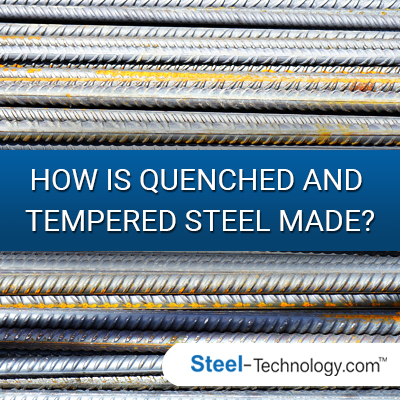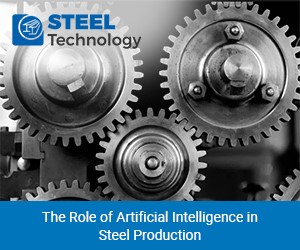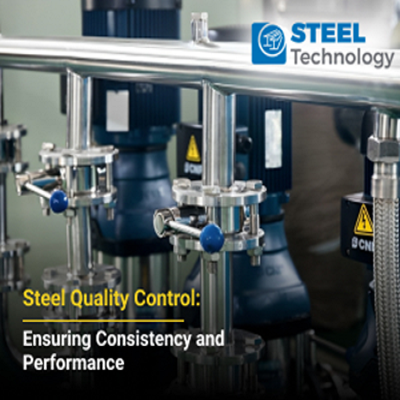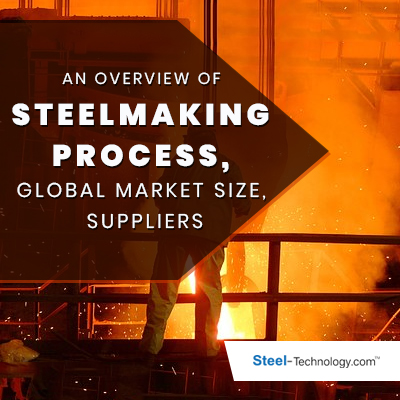Secondary Metallurgy in Steel Manufacturing: Enhancing Quality and Performance

Steel, a fundamental material in various industries, undergoes a meticulous manufacturing process to meet stringent quality standards and specific application requirements. Primary steelmaking lays the foundation, but it is secondary metallurgy that refines the steel, enhancing its quality, adjusting its composition, and optimizing its properties. This critical stage in the steel production process plays a pivotal role in ensuring that the final product meets the diverse needs of industries ranging from construction to aerospace.
1. Primary Steelmaking Overview
Before delving into the intricacies of secondary metallurgy, it is imperative to have a solid understanding of the primary steelmaking process. Traditionally, two principal methods are in use: the Basic Oxygen Furnace (BOF) and the Electric Arc Furnace (EAF). In the BOF process, molten iron is transformed into steel by injecting oxygen, while the EAF process relies on electric arcs to melt recycled steel scrap. Despite the efficacy of these methods in generating crude steel, the resulting product may contain impurities and may not possess the exact characteristics required for specific applications.
2. Ladle Furnace (LF): Refining at the Heart
The journey of steel through secondary metallurgy begins with the transfer of molten steel from primary steelmaking vessels to a ladle. The ladle furnace (LF) serves as a crucial refining vessel at this stage. One of the primary objectives of LF treatment is the removal of impurities that could compromise the steel's quality. Desulfurization and dephosphorization processes are employed to eliminate sulfur and phosphorus, common impurities that can affect the steel's mechanical properties and lead to issues like brittleness.
Additionally, the ladle furnace allows for temperature adjustments and the introduction of alloying elements to achieve the desired composition. The control over these variables contributes significantly to the final quality of the steel, making it suitable for various applications.
3. Vacuum Degassing: Purity Under Pressure
Vacuum degassing is a pivotal process within secondary metallurgy that focuses on achieving high levels of purity in the steel. As the molten steel is subjected to a vacuum environment, volatile elements such as hydrogen and oxygen are removed. This step is particularly crucial when producing low-carbon steels, where the presence of hydrogen and oxygen can have adverse effects on mechanical properties, leading to issues like hydrogen embrittlement.
The vacuum degassing process not only enhances the steel's cleanliness but also contributes to the overall improvement of its mechanical and metallurgical properties. By effectively eliminating volatile elements, manufacturers can produce steel that meets stringent quality requirements.
4. Argon Oxygen Decarburization (AOD): Precision in Stainless Steel Refining
In the realm of secondary metallurgy, the production of stainless steel often incorporates the Argon Oxygen Decarburization (AOD) process. Tailored to the unique needs of stainless steel, AOD serves as a refining method specifically crafted to diminish the carbon content while preserving the essential alloying elements. Within the AOD vessel, meticulous control is exercised over the steel's composition, ensuring it aligns with the stringent criteria for corrosion resistance, strength, and formability inherent in various stainless steel applications.
During AOD, oxygen and argon are blown into the molten steel to oxidize and remove carbon. This process facilitates the adjustment of the steel's chemical composition, resulting in a product with enhanced properties suitable for various industrial uses.
5. Electroslag Remelting (ESR) and Vacuum Arc Remelting (VAR): Crafting Specialty Steels
In certain cases, especially in the production of specialty steels and alloys, secondary metallurgy involves processes like Electroslag Remelting (ESR) and Vacuum Arc Remelting (VAR). These methods focus on achieving a more homogeneous composition, reducing impurities, and enhancing the cleanliness of the steel.
Electroslag remelting involves remelting the steel under controlled conditions, while vacuum arc remelting utilizes an electric arc in a vacuum environment. Both processes contribute to the production of high-quality, specialty steels with tailored properties, making them ideal for applications in aerospace, energy, and other advanced engineering fields.
6. Inclusion Modification: Improving Cleanliness
Secondary metallurgy addresses not only the chemical composition of steel but also the control and modification of inclusions—non-metallic particles that can impact the steel's properties. Techniques such as calcium treatment are employed to modify and reduce the size of inclusions, improving the cleanliness of the steel.
Clean steel with minimized inclusions exhibits enhanced mechanical properties, such as improved fatigue resistance and toughness. This is crucial in applications where the steel is subjected to dynamic loads or harsh operating conditions.
7. Alloying and Trim Additions: Tailoring Composition for Performance
A significant benefit of secondary metallurgy lies in its exacting control over alloying elements. This allows manufacturers to finely adjust the steel's composition to fulfill specific performance criteria. Incorporating alloying elements like chromium, nickel, and molybdenum in precise quantities empowers the achievement of the desired final composition with meticulous accuracy.
Trim additions of alloying elements during secondary metallurgy allow for fine-tuning the steel's properties, ensuring it meets the exact specifications required for different applications. This level of control is especially critical in industries where the performance of the steel is closely tied to the success of the end product.
Conclusion
Secondary metallurgy is a complex and integral process within steel manufacturing, playing a central role in defining the characteristics of the ultimate steel product. Spanning from treatments in ladle furnaces to vacuum degassing, and encompassing refining techniques like Argon Oxygen Decarburization (AOD) and specialized processes such as Electroslag Remelting (ESR) and Vacuum Arc Remelting (VAR), each phase contributes significantly to the overall improvement of steel quality. The ability to exercise precise control over composition, eliminate impurities, and customize properties establishes secondary metallurgy as a cornerstone in the production of steel tailored for a myriad of applications. Given the persisting demand for high-performance materials across industries, the ongoing innovations and advancements in secondary metallurgy will continue to be crucial in meeting the dynamic and evolving needs of various sectors.











